You can’t say that you haven’t heard the hype of “Korean Glass Skin” all over social media, which is the epitome of the EAST and is currently highly sought after in the WEST.
Korean shows & the K-pop industry have been a huge craze all around the globe which also somewhat influenced the global beauty industry in a massive way that cosmetic lovers are now obsessed with Korean beauty.
But you might be questioning “So what’s the big deal of this Korean skincare trend?” That might be something as usual.
Well, the answer is; that Korean Beauty, or K-Beauty, has taken the skincare world by storm with its innovative approach to beauty and skincare. One of the key aspects of K-Beauty is the use of unique and effective ingredients in skincare formulations. From traditional ingredients like ginseng and rice water to modern innovations like snail mucin and propolis, Korean skincare ingredients offer a wide range of benefits for the skin. Incorporating these ingredients into your formulations can help elevate your products’ efficacy and appeal, catering to the growing demand for K-Beauty-inspired skincare.
Korean skincare ingredients are known for addressing various skin concerns, from hydration and brightening to anti-ageing and soothing properties.
By understanding the benefits of these ingredients, cosmetic formulators can create products that resonate with consumers looking for effective and innovative skincare solutions.
This article will explore some of the most popular and effective Korean skincare ingredients, providing insights into their uses and benefits for formulators looking to tap into the K-Beauty trend and create standout skincare products.
Understanding the K-Beauty Craze
We need to have a clear background check of how the K-beauty craze started from its origins and historical events to the global impact of Korean beauty brands that are now hyped globally.
Origins and Evolution of K-Beauty
Korean beauty and skincare regimens have been practised since ancient times. The Coreana Cosmetics Museum, situated south of Seoul, reveals the cultural diversity and historical progression of Korean cosmetics with a collection of over 5300 artefacts dating from prehistoric to the modern period.
In the past times, Koreans believed that their looks could impact their inner selves and placed great value on it. Thus, both men and women focused on their external appearance, creating a separate culture centred on cosmetics and accessories. They created washes, lotions, creams, face oils, coloured powders, lipsticks, and brow inks, demonstrating great proficiency in the art of decoration.
Ground mung beans (“Jodu” in Korean), which are high in saponin, an efficient cleanser, were used to make cleansing soap by combining the powder with water. Plant liquids, such as pumpkin stems, were used to make post-facial cleaning lotion.
Plant seed oils or extracts, such as castor oil and camellia oil, were popular solvents because of their gentle aroma and nonsticky surface.
Traditional cosmetics produced from botanicals and grains have different fragrances. Various scent processes are discussed in the “Gyuhap Chongseo” (Encyclopaedia of Women) from 1809, published during the Joseon Dynasty period.
Ground rice and millet were powdered. Brow ink, made from plant ash and indigo soot in shades of black, blue, and dark brown, allows for the creation of various forms, the most prominent of which were crescent and willow leaf patterns.
Korean beauty originated around the Three Kingdoms period when beauty culture was more widespread. The Goryeo dynasty was given extra attention since it was considered the apex of Korean beauty standards. In the Joseon Dynasty, the concept of beauty derives from a fair-looking complexion and cherry lips that enhance the elegance of their position.
Key Principles of Korean Skincare Routines
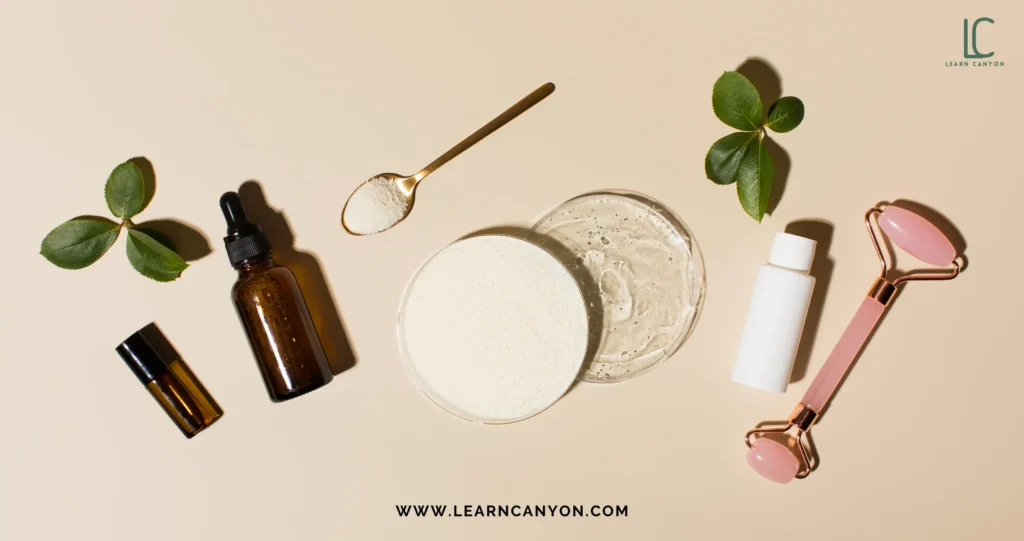
Principle 1: Layering:
Korean skincare routines emphasize layering multiple products to address different skin concerns. This typically involves a multi-step process including cleansing, toning, treatment (serums/ampoules), moisturizing, and sun protection. Each layer serves a specific purpose and builds upon the previous one to achieve optimal results.
Principle 2: Gentle Cleansing:
Cleansing is considered one of the most crucial steps in a Korean skincare routine. However, unlike harsh exfoliants or abrasive cleansers, Koreans prefer gentle cleansing products that effectively remove dirt, oil, and impurities without stripping the skin of its natural oils.
Double cleansing, which involves using an oil-based cleanser followed by a water-based cleanser, is a common practice to ensure thorough cleansing without compromising the skin’s moisture barrier.
Principle 3: Hydration is Key:
Hydrated skin is the foundation of a healthy and radiant complexion in Korean skincare philosophy. Hydration is not only achieved through moisturizers but also through the use of hydrating toners, essences, and serums that contain ingredients like hyaluronic acid, glycerin, and ceramides. Hydration helps to maintain skin elasticity, plumpness, and overall vitality.
Principle 4: Targeted Treatments:
Korean skincare routines often include targeted treatments to address specific skin concerns such as acne, hyperpigmentation, or ageing. This may involve the use of serums, ampoules, or masks formulated with potent active ingredients like vitamin C, retinol, niacinamide, or snail mucin to address specific concerns and promote skin health.
Principle 5: Sun Protection:
Protection against harmful UV rays is considered essential in Korean skincare routines to prevent premature ageing, hyperpigmentation, and skin damage. A broad-spectrum sunscreen with high SPF is applied as the final step in the daytime skincare routine, and reapplication throughout the day is encouraged, especially for prolonged sun exposure.
Global Impact and Popularity of K-Beauty Products
The major GLOBAL impact of K-beauty skincare arose from the popularity of K-pop and K-dramas with consumers embracing beauty routines and products used by their favourite K-pop idols and actors. For example, following multistep skincare routines that have become very popular in recent years, sleeping packs, sheet masks, BB, and CC creams.
The well-known 10-step skin care programme exemplifies South Koreans’ desire to spend money on various beauty items at the same time.
South Korea initially registered a beauty product trade surplus of over KRW 100 billion (USD 87.9 million) in 2012, and it has since grown in tandem with the popularity of Korean pop culture, widening its export nations from 137 to 160 by 2019.
The skincare trade surplus increased by KRW 7.92 trillion (USD 6.4 billion) in 2020 due to increased international demand. By this point, beauty products made for 14.3% of the country’s total USD 44.86 billion trade surplus, up from 13.6% in 2019.
The growing K-beauty skincare products market size is projected to register a CAGR of 5.7% between 2023 to 2032 driven by the increasing cultural influence.
Exploring Essential Korean Skincare Ingredients List
We have compiled the top Korean Skincare Ingredients list that are used in K-beauty products.
Certain Korean beauty companies have also established authority for naturalness, in response to consumer demand, owing mostly to Korean botanical substances such as Ginseng, Mugwort Extract, Licorice Root, Bamboo Extract, Birch Extract, Snail Mucin, Centella Asiatica and Hyaluronic Acid.
- Ginseng Extract: Energize and rejuvenate
One of the most common forms of ginseng used in KOREAN skincare is ginseng extract. This extract is derived from the root of the ginseng plant and contains high concentrations of active compounds beneficial for the skin.
Ginseng extract is often used in serums, essences, and ampoules to deliver concentrated doses of its skin-rejuvenating properties.
- Ginseng Infused Products: Skincare products infused with ginseng are also popular in Korean beauty routines. These include ginseng-infused toners, moisturizers, creams, and masks. Ginseng-infused products are formulated to provide the skin with a continuous supply of ginseng’s revitalizing and nourishing benefits throughout the day or night.
- Ginseng Ferment Filtrate: Fermented ginseng extract, known as ginseng ferment filtrate, is prized for its enhanced efficacy and absorption into the skin. Fermentation breaks down the molecular structure of ginseng, making its nutrients more bioavailable and better able to penetrate the skin barrier. Ginseng ferment filtrate is commonly found in Korean cosmetics such as serums, essences, and sheet masks for improved skin vitality and radiance.
Formulation Possibilities of Ginseng Extract
Ginsenosides, the active components of ginseng, can be found in Korean ginseng. Korean ginseng includes glycans (panaxans), the polysaccharide fraction DPG-3-2, peptides, maltol, B vitamins, flavonoids, and volatile oil.
Usually in cosmetic formulations, ginseng extract is recommended to be used at a concentration level of 3% to 5% in skincare products, 1% to 3% in hair lotions and another 5% in different haircare formulations. It is hydro-soluble in formulations. It’s P.H. is 4-6.5.
Some formulation possibilities of Ginseng extract are;
- Moisturisers and Creams:
- Create a rich, emollient cream infused with ginseng extract to moisturize and soften the skin deeply.
- Combine ginseng extract with other botanical extracts or oils, such as green tea or jojoba oil, to enhance its skin-rejuvenating effects and antioxidant properties.
- Facial Masks:
- Formulate a sheet mask soaked in a ginseng-infused essence to deliver a boost of nutrients and hydration to the skin.
- Create a creamy, wash-off mask with ginseng extract to provide a pampering experience while promoting skin firmness and radiance.
- Toning Lotions and Toners:
- Formulate a refreshing toning lotion infused with ginseng extract to revitalize and balance the skin’s pH.
- Combine ginseng extract with other botanical extracts like liquorice or Centella Asiatica to create a multi-functional toner that brightens and soothes the skin.
- Snail Mucin: Nature’s Repairer
South Koreans adhere to the power of Snail Mucin because it includes hyaluronic and glycolic acids, glycoproteins and glycosaminoglycans, which give hydration and retain moisture in the skin. It also lowers wrinkles, fine lines, and scars when taken daily, making it an excellent element in anti-ageing treatments.
Snail mucin contains growth factors and peptides that promote skin repair and regeneration. These compounds help to stimulate the production of collagen and elastin, which are essential for maintaining skin elasticity and firmness.
Snail Mucin is also one of the best Korean skincare ingredients for acne and oily skin. It helps to balance sebum production and regulate oiliness, without clogging pores or causing breakouts.
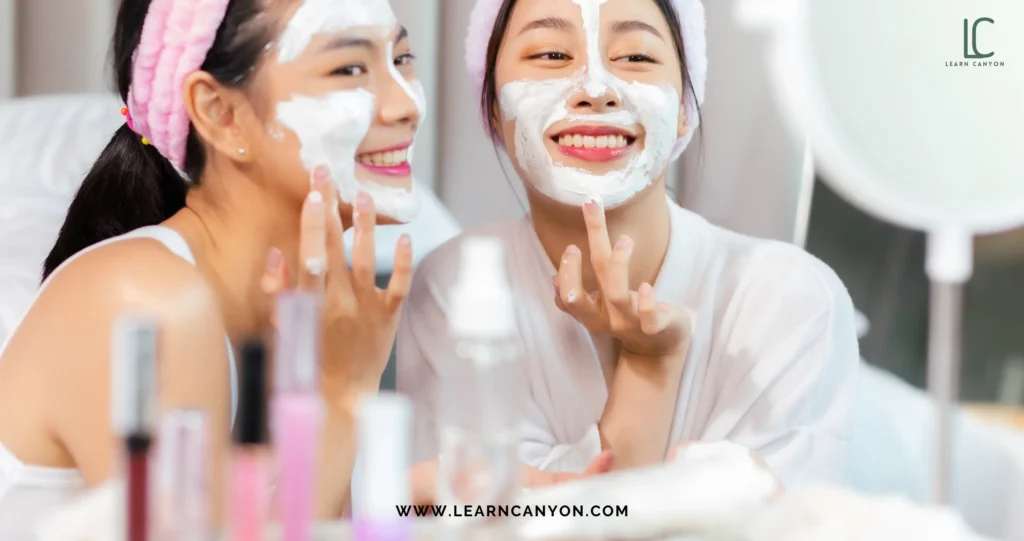
Incorporating Snail Mucin into Cosmetic Formulations
Generally, snail mucin is first extracted through certain processes, and it all starts with snail farming, then mucin collection is done using a mechanical stimulation process, and then comes the filtration, purification, sterilization and preservation. After these processes, its extract is now ready for cosmetic formulations to prepare various cosmetic products.
Snail mucin extracts, or snail secretion filtrate, are incorporated into various cosmetic formulations to leverage skin-rejuvenating properties such as moisturizers, serums, creams, or masks. The extract is typically combined with other ingredients to create a formulation that provides specific skincare benefits.
Here are some examples of cosmetic formulations that can utilize snail mucin:
- Snail Mucin Serums:
A lightweight serum formulation enriched with snail mucin to deliver intense hydration and skin-renewing benefits. Combine snail mucin with humectants like hyaluronic acid and glycerin to attract and retain moisture in the skin.
- Snail Mucin Moisturizer & Cream:
Blend snail mucin with emollients like shea butter or jojoba oil to soften and smooth the skin. Include antioxidants such as vitamin E or green tea extract to protect the skin from environmental damage.
- Snail Mucin Mask:
A sheet mask or wash-off mask saturated with snail mucin essence for an intensive skin treatment. Use a blend of hydrating ingredients like hyaluronic acid and glycerin to boost moisture levels in the skin.
- Snail Mucin Sunscreen:
A sunscreen formulation containing snail mucin to provide broad-spectrum UV protection while nourishing and hydrating the skin. Combine snail mucin with lightweight emollients and UV filters to create a non-greasy and comfortable sunscreen formula. Include antioxidants such as vitamin E or green tea extract to enhance sun protection.
- Centella Asiatica: Soothe and calm.
Centella Asiatica, also known as “Cica” or “Tiger Grass,” is a popular ingredient in Korean skin care products because it helps keep skin nourished. Its benefits are it is soothing on the skin and helps reduce redness, inflammation and discomfort. That’s why it is one of the most effective korean skincare ingredients for acne, eczema and rosacea.
Helps in wound healing, anti-ageing, provides hydration, improves skin texture and is a really good anti-bacterial ingredient.
Cosmetic formulations of Centella Asiatica:
Centella Asiatica comprises a combination of three main components, asiaticoside, asiatic acid, and madecassic acid, which have been formed in hydrogel for wound healing.
Its extract is used in cosmetic formulation to produce cleansers, skin conditioners and soothing cosmetics. According to the Cosmetic Ingredient Review (CIR) Expert Panel, it is safe in current cosmetic usage and concentrations when engineered to be non-sensitizing. It has been proven to be safe in the recommended dosages.
Generally, the concentration of Centella Asiatica extract or its active compounds in skincare products can range from as low as 0.1% to as high as 5% or more.
- Serums and Ampoules: Concentrations of Centella Asiatica in serums and ampoules can range from 1% to 5% or higher, depending on the formulation and desired potency.
- Creams and Lotions: Moisturizers, creams, and lotions may contain lower concentrations of Centella Asiatica. Concentrations typically range from 0.5% to 2%, although some formulations may contain higher concentrations for enhanced efficacy.
- Spot Treatments and Essences: Spot treatments and essences are designed to target specific skin concerns that may contain higher concentrations of Centella Asiatica for more targeted and potent effects. Concentrations can range from 1% to 5% or higher, depending on the formulation and intended use.
- Mugwort: Anti-Inflammatory & Anti-Oxidant
This popular Korean substance has antibacterial and antifungal qualities, as well as a high concentration of antioxidants.
While the benefits of this ingredient are numerous, the key feature that distinguishes it is its capacity to deeply soothe the skin. It is quite effective at soothing irritated skin triggered by external factors such as sun damage, pollution, or even a weakened barrier.
Formulation Possibilities of Mugwort:
Mugwort, also known as Artemisia, can be incorporated into various cosmetic formulations at different concentration levels to leverage its skin benefits effectively.
Camphor, cineole, α- and β-thujone, artemisia ketone, borneol, and bornyl acetate are among the primary elements of Mugwort ingredient, along with additional phenols, terpenes, and aliphatic molecules.
- A low concentration of Mugwort extract (0.1% – 1%) is used in preparing toners and lotions. Combine mugwort extract with hydrating ingredients like hyaluronic acid or glycerin to replenish moisture and soothe the skin.
- Moderate Concentration (1% – 3%) is recommended to prepare serums and essences, masks and spot treatments. Formulations with moderate concentrations of mugwort can deliver targeted benefits such as hydration, soothing, and antioxidant protection.
- High Concentration (3% – 5% or higher) is recommended to prepare creams and moisturizers that provide deep hydration, soothing relief, and antioxidant protection for the skin providing more radiant skin by morning.
- Rice Water: Brighten and Even Tone
This is the most common and famous ingredient used in korean skincare which acts as an anti-ageing elixir, lightens scars and brightens the skin, even tones the skin, diminishes the oily appearance of the skin, and acts as a gentle exfoliation.
Rice water is high in vitamins, particularly B and C, and contains potassium, iodine, magnesium, zinc, selenium, and manganese. When used consistently, rice water nourishes damaged hair restores hair follicles, and encourages healthy hair.
Incorporating Rice Water In Cosmetic Formulations:
The gel composition comprising 96% rice water was biocompatible with human skin and had acceptable aesthetic qualities for cosmetic preparations. Thus it has been proven to be the safest on human skin and hair follicles.
- Rice Water facial mists or toners and cleansing foam are prepared with concentration levels of 0.5%-1% that provide a subtle glow and maintain natural moisture balance.
- Rice water serums and essences are prepared with concentration levels of 1%-3% to hydrate, brighten, and soothe the skin while improving overall skin texture.
- Rice water masks, moisturizers, and ampoules are prepared with concentration levels of 4%-6% or higher than 6% for intensive targeted treatment of specific skin concerns, such as dullness or uneven skin tone.
- Professional treatments include rice water peels and rice water concentrates with a recommended dosage of higher than 10% to gently remove dead skin cells, promote skin renewal and treat bigger skin concerns.
Likewise, other korean ingredients include Bamboo extract, Green Tea, Propolis, Collagen, Gotu Kola extract, Yuja extract and Licorice. All have their recommended dosage to be incorporated in cosmetic formulations.
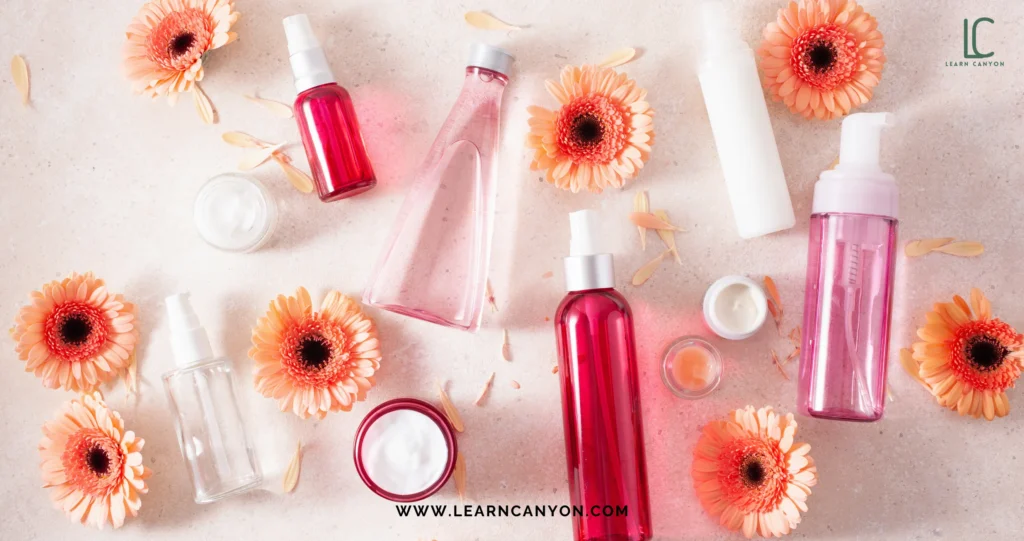
Latest K-Beauty Innovations for Skincare Formulations
The landscape of K-Beauty skincare formulations is ever-evolving, with constant innovations to meet the diverse needs and preferences of consumers. Here are some of the Latest K-Beauty Innovations for Skincare Formulations :
- Microbiome-Friendly Skincare:
With growing awareness of the skin microbiome’s importance, K-Beauty brands are formulating products that support a healthy skin microbiome. These formulations often include prebiotics, probiotics, and postbiotics to promote balanced and resilient skin.
- Customizable Skincare:
Personalization is key in the latest K-Beauty innovations, with brands offering customizable skincare solutions tailored to individual skin concerns and goals. This may involve personalized skincare assessments, custom-blended products, or multi-step routines that adapt to changing skin needs.
- Multi-Functional Products:
K-Beauty continues to emphasize efficiency and simplicity in skincare routines with multi-functional products that offer multiple benefits in one formula. Examples include hybrid moisturizers with built-in SPF protection, toners with exfoliating properties, and serums targeting multiple skin concerns.
- Environmentally Conscious Formulations:
Sustainable and eco-friendly skincare formulations are gaining momentum in K-Beauty. Brands are incorporating biodegradable packaging, environmentally friendly ingredients, and sustainable sourcing practices to reduce their environmental impact.
- Texture Innovation:
Texture plays a significant role in K-Beauty skincare, and brands are continually innovating to provide unique sensorial experiences. This includes lightweight gel creams, bouncy jelly textures, and transformative textures that adapt to the skin upon application.
- Sheet Mask Evolution:
Sheet masks remain a staple in K-Beauty, but recent innovations include biodegradable materials, advanced delivery systems, and targeted treatments for specific skin concerns such as hydration, brightening, and anti-ageing.
- Digital Integration:
K-Beauty brands are leveraging technology to enhance the skincare experience, with apps for personalized skincare routines, virtual consultations, and AI-driven skincare recommendations based on skin analysis.
Case Studies: Successful Integration of K-Beauty Ingredients
- Case study 1:
One notable success story is the incorporation of snail mucin in COSRX Advanced Snail 96 Mucin Power Essence.
This essence contains a high concentration (96%) of snail mucin, which helps to hydrate the skin, repair damaged cells, and improve overall skin texture. The product gained a cult following in the K-Beauty community and received rave reviews for its effectiveness in treating various skin concerns, including acne scars, fine lines, and dullness.
Key Takeaways:
- Successful integration of snail mucin in skincare products requires high-quality sourcing and extraction methods to ensure potency and efficacy.
- Transparency in product formulation and clear communication of benefits to consumers is essential for building trust and loyalty.
- Case Study 2:
The incorporation of Centella Asiatica in the Dr Jart+ Cicapair Tiger Grass Color Correcting Treatment has been a notable success. This cream contains a blend of Centella Asiatica extract, along with other botanicals, to calm and soothe sensitive or irritated skin while providing natural-looking coverage for redness or uneven skin tone. The product has become a staple in many skincare routines, particularly for those with sensitive or reactive skin.
Key Takeaways:
- Effective utilization of Centella Asiatica in skincare formulations requires careful consideration of formulation stability and ingredient synergies to maximize its skin-soothing benefits.
- Products targeting specific skin concerns, such as redness or irritation, can benefit from the incorporation of Centella Asiatica to provide targeted relief and correction.
Conclusion
Overall, we can judge that korean beauty has its unique way of dealing with skin concerns and can heal and transform your skin in a youthful approach. We understood their key principles of korean skincare, essential korean skincare ingredients, their use in cosmetic formulations, concentration levels required, the latest innovation of korean skincare ingredients and certain case studies.
These topics helped us understand how cosmetic industries take advantage to incorporate effective korean skincare ingredients such as ginseng, centella asiatica, mugwort, snail mucin and others in a specific way to get the benefits in their specific skincare formulations to get that radiant and rejuvenated skin.
Formulators who have never worked with korean skincare ingredients might not be able to use these korean ingredients straight away in a formulation as they need to understand their chemistry and compositions but to make it easy we at Learn Canyon, provide exclusive training sessions and advanced certified courses in organic skincare and haircare formulation to help those confused formulators get clarity and with our cutting-edge strategies they can effectively formulate korean ingredients based skincare and haircare products to get the maximum benefits.
Happy Formulating!


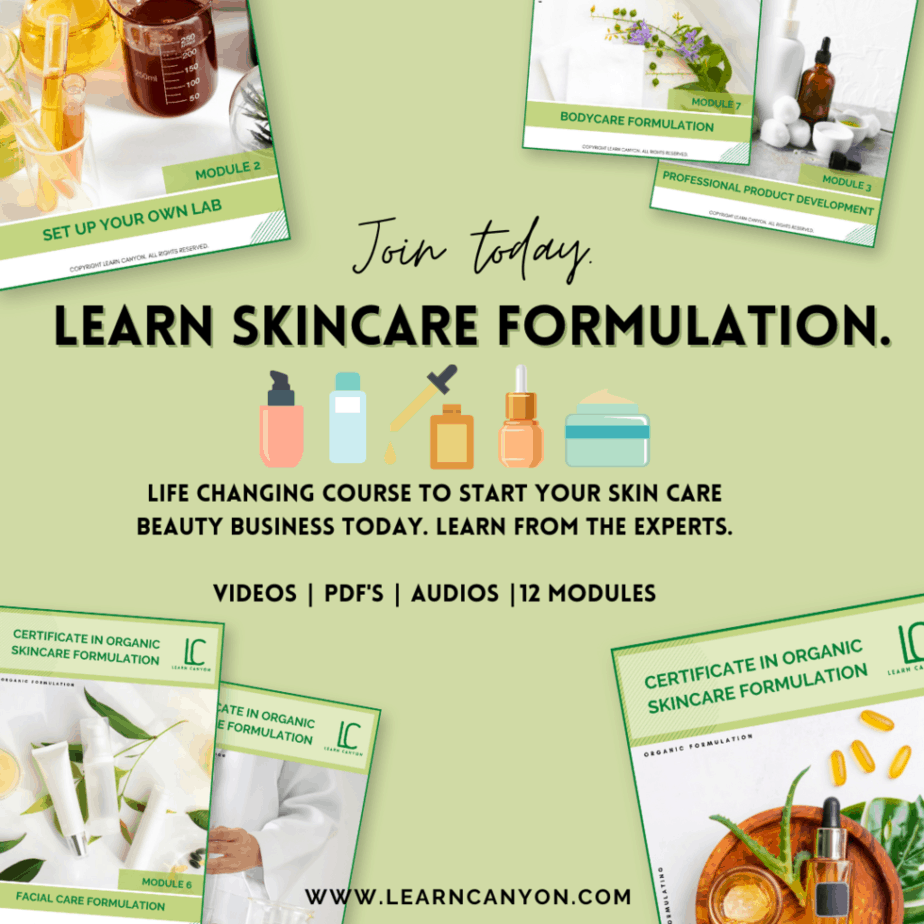
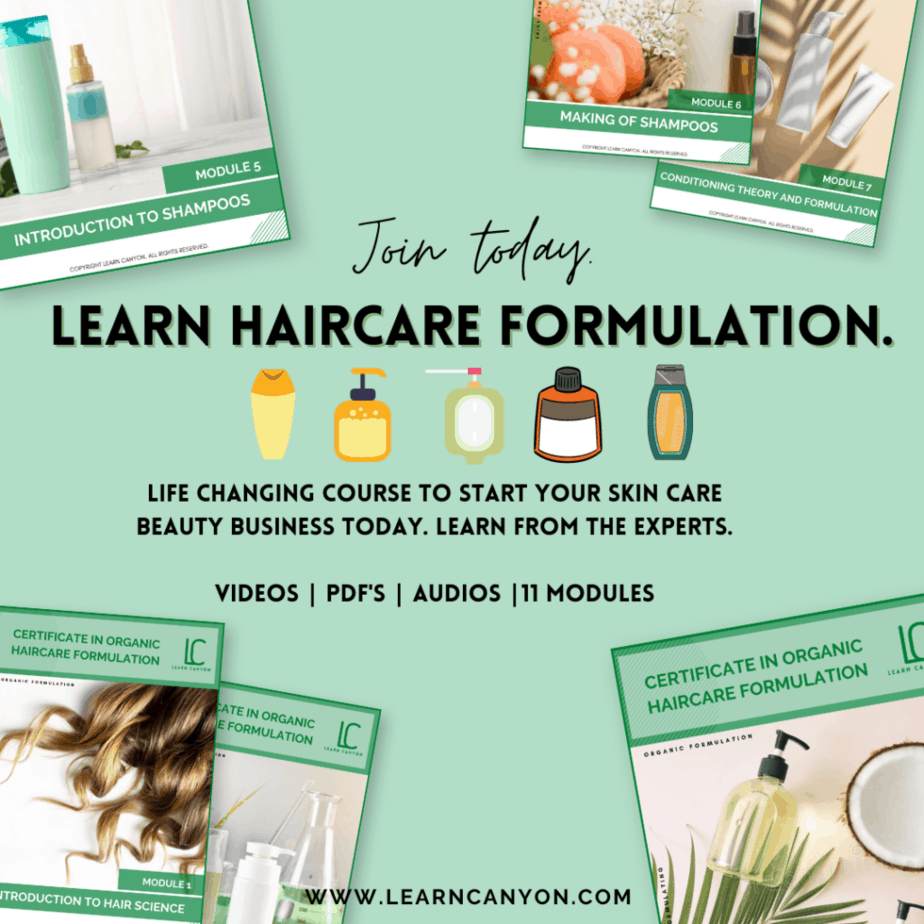
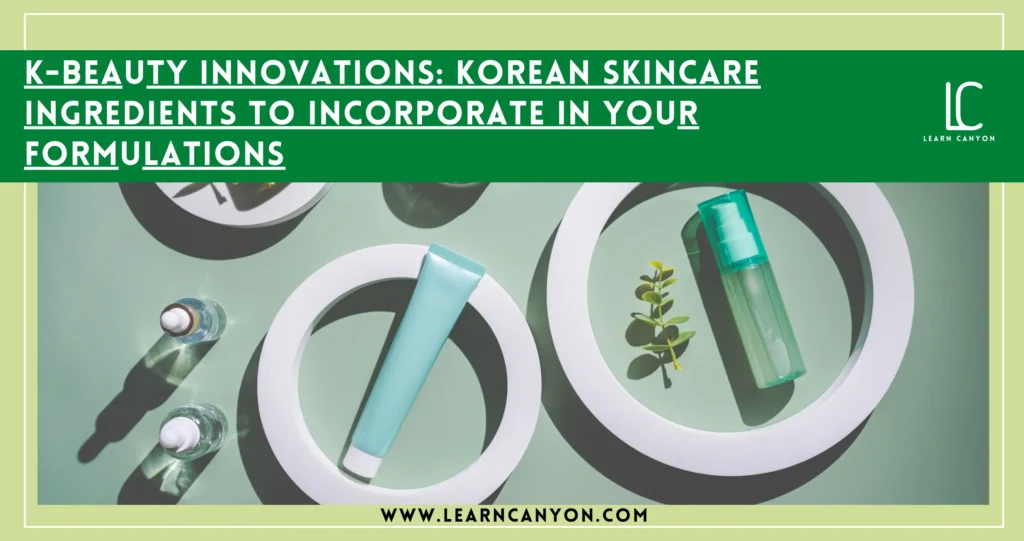
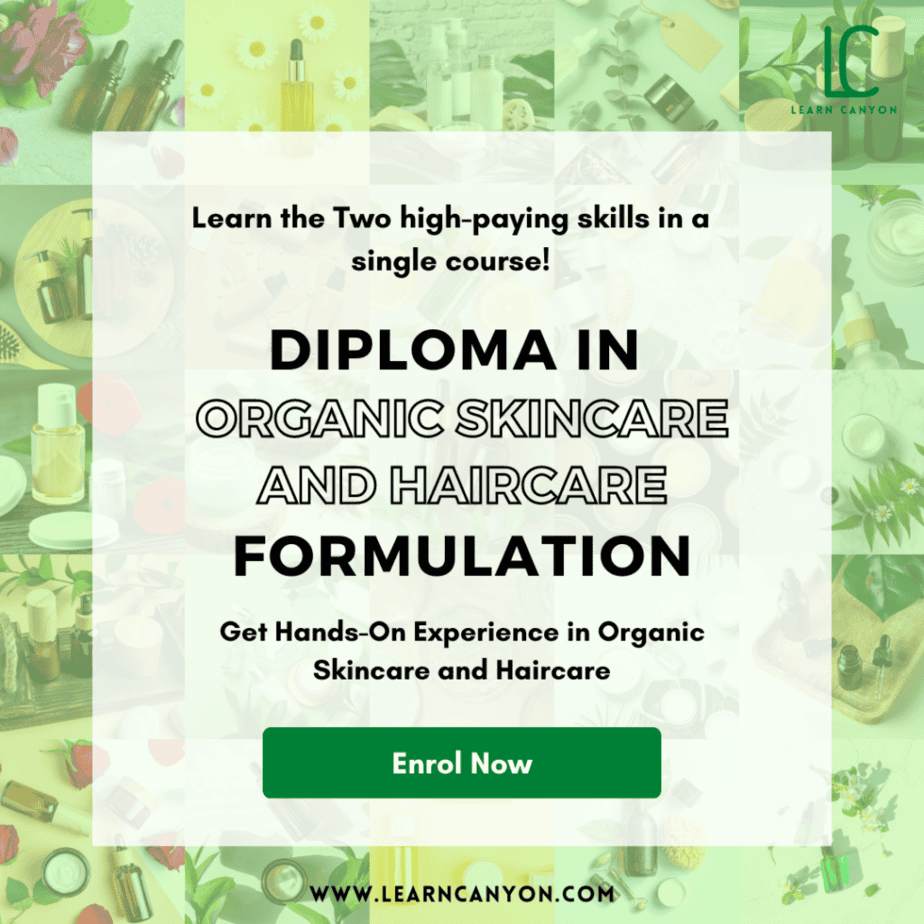
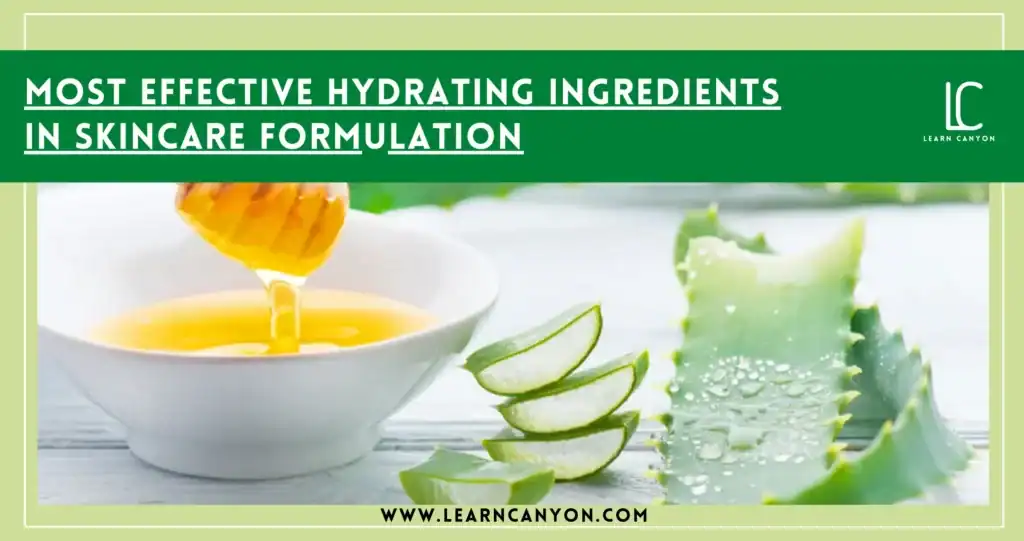
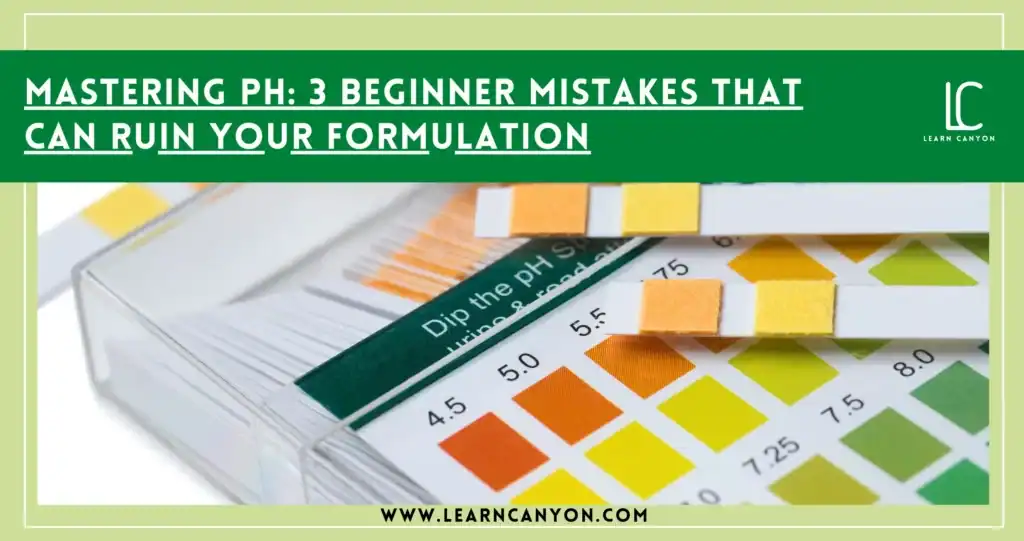




1 thought on “K-Beauty: Must-Have Korean Skincare Ingredients for Your Formulas”
Love this guide on K-Beauty ingredients! 🌿✨ Korean skincare is all about gentle yet powerful formulations that deliver real results. Ingredients like Snail Mucin, Centella Asiatica, and Niacinamide are true game-changers!